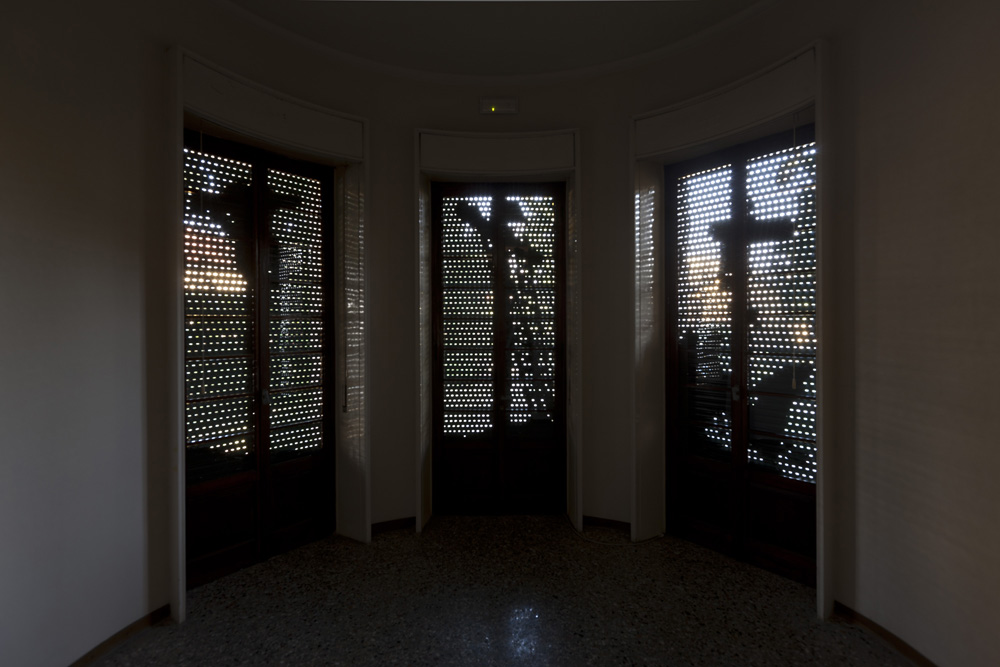Andrea Mastrovito
While I am walking with Julia through the rooms of Casa Testori, during the first inspection for the exhibition, we find ourselves in the big hall, the biggest room of the house. I check the measures, I make a couple of calculations and I realize that, right there, Johnny is perfectly fitting. So I try to lower the shutters to estimate the darkness’ degree of the room, thinking of the video-projection. As I’m lowering them, I notice a particular drawing created by the extierior light between the holes in the shutter itself. I ask Pietro, who’s right there, what is that, and he explains me that it’s the shadow of the decorated bars in front of the windows. I turn around looking at the three big windows of the apsidal porch, and I immediately picture me plugging some of the shutters’ holes with scotch tape. The principle is easy; is the chinese shadow’s one, the principle of the end of 18 century’s theatre: a shape and a back-projected light. Inquiring about the several room’s function, I find out that was exactly in the porch where the beloved deads’ bodies where brought to the last goodbye: so, on these three big shutters, I portray a Christ’s Deposition and Transport, using as the three crosses, the central wooden axis of the french door and putting in open dialogue this work with the opposite Velazquez’s Crucifixion reported and divided in Johnny’s video-installation. The semantic link between these two works is also enhanced by the itself experience of Johnny the soldier who – as represented down on the right in the installation – is shot and mutileted by a granade while carrying a dead body toward the trench. The ironical title of this work, Easy come, easy go (that it’s actually the title of the whole exhibition), underlines the precariousness of the human condition and even of the divine one, both by representing the empty cross and by the utilized technical support (the half-lowered shutter): as the Saviour arrives, he’s already gone.





